By: Zachary Draves
The year was 1969. A year that crystallized a decade of rapid social change and upheaval. A year where anything was possible and nothing was out of the ordinary.
It was the year that gave us the Boston Celtics capping off their dynasty run, the Moon Landing, Woodstock, the Harlem Cultural Festival, and the Miracle Mets winning the World Series.
In other words, talk about going out with a bang.
But what set the tone for such a year was fittingly at the beginning, January 12 to be exact with Super Bowl III between the New York Jets and the Baltimore Colts. It was a quintessential 60s showdown between the upstart rebels vs the vanguards of the establishment.
The Jets were the upstart rebels. Their charismatic, confident, and cool quarterback Broadway Joe Namath led his team to an 11-3 record and became the champions of the rival American Football League (AFL).
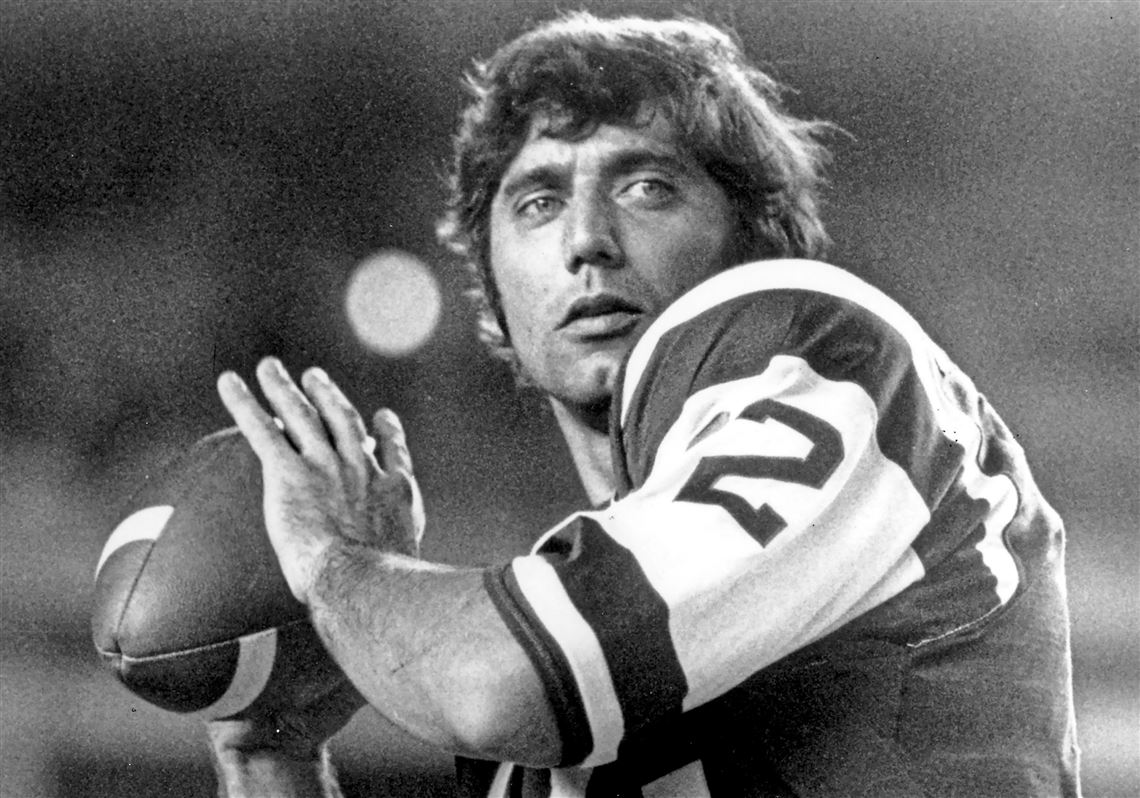
(Courtesy: Associated Press)
The Colts were the vanguards of the establishment. Their crue cut quarterback Johnny Unitas, a gridiron icon from the 1950s, was injured during the preseason and replaced by Earl Morrall. They ended with a 13-1 record and rolled their way to winning the NFL championship.

(Courtesy: The Baltimore Sun)
At the time, pro football was dominated by the NFL and other rival leagues came and went. Either they crumbled entirely or immediately merged with the NFL. But in 1960, the AFL was formed and it soon became competitive with the NFL in terms of generating revenue through television and courting future talent.
One such talent was Namath who was drafted by the Jets from the University of Alabama in 1965 for a reported $427,000.
Thus an intense bidding war ensued and NFL commissioner Pete Rozelle along with the NFL owners announced in 1966 that there would be an official merger between the two leagues. This would include a combined draft, interleague play, and a championship game at the end of the season with a merger date still pending.
At the time, most considered the NFL to be a superior league with illustrious franchises and didn’t think much of the AFL.
“From the early years of the AFL, it was seen as minor league and inferior to the Green Bay Packers and Chicago Bears,” said veteran sports journalist Dave Kindred in a phone interview with Team NBS Media. “Here comes the upstart league and upstart youth. They demanded their place and they were told to behave themselves.”
By the time Super Bowl III came along, those sensibilities were evident as most expected the Colts to obliterate the Jets and had them as 18-point favorites.
However, somebody forgot to relay that message to Namath, who famously guaranteed that the Jets would win three days prior. After a few drinks, he got up in front of people at the Miami Touchdown Club and said “We’re gonna win the game. I guarantee it”.
He famously surrounded himself with reporters while he was lounging in the beach as if he didn’t have a care in the world.

(Courtesy: Walter Iooss Jr./Sports Illustrated)
Not to be outdone, Kindred as a young sports columnist at the time who wasn’t at the game, said that he wrote a column declaring the Jets would win as well.
“If the establishment was going to be tweaked, why not in football?” he asked.
The stage was set at the Orange Bowl in Miami to determine not just who would win the game, but what direction pro football was going in and who would be at the wheel. It also marked the first time that the game used the trademark “Super Bowl” whereas the previous two years it was the AFL-NFL championship game.

(Courtesy: NFL/AP 2009)
What transpired captured the essence of 1969.
After a scoreless first quarter, the Jets had the ball at their goal line with 5:06 remaining in the second quarter. Running back Matt Snell ran for a 5-yard touchdown to give New York a 7-0 lead.
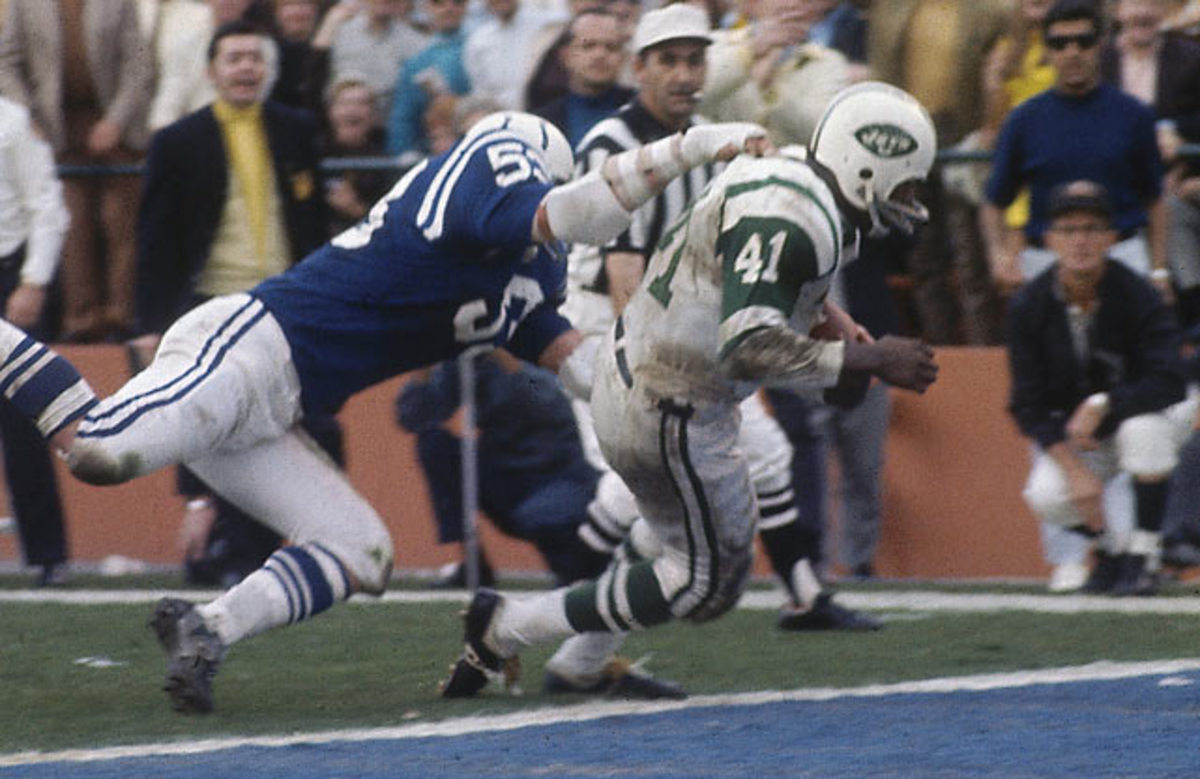
(Courtesy: Focus on Sports/Getty Images)
From there, the Jets would utilize the running game and their defense would go on to hold the Colts scoreless for three quarters. Through the second and third quarters, the Jets would score on three field goals by kicker Jim Turner.
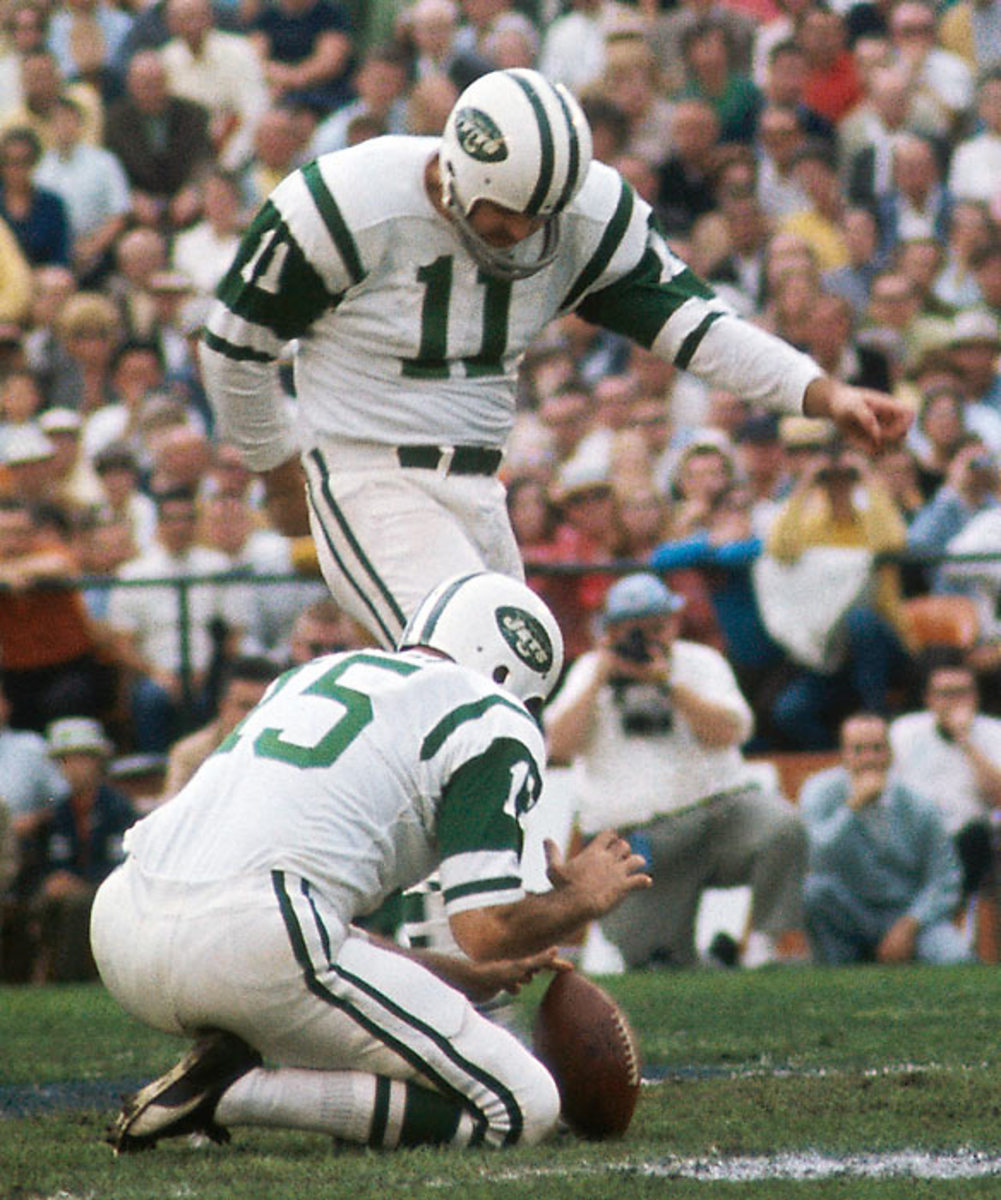
(Courtesy: Focus on Sport/Getty Images)
In the fourth quarter, the Jets led 16-0 before the Colts managed to get on the board for the first time on a one-yard touchdown by running back Jerry Hill with 3:14 remaining. It was during the second half that Unitas got into the game in place of Morrall, but it was too late.
The Jets held on for the improbable upset 16-7 as the rebels reigned supreme over the establishment.
Namath was more than spectacular as he went 17/28 for 206 passing yards. Snell ran for 121 yards. Jets wide receiver George Sauer Jr. caught eight passes for a game high of 133 yards.
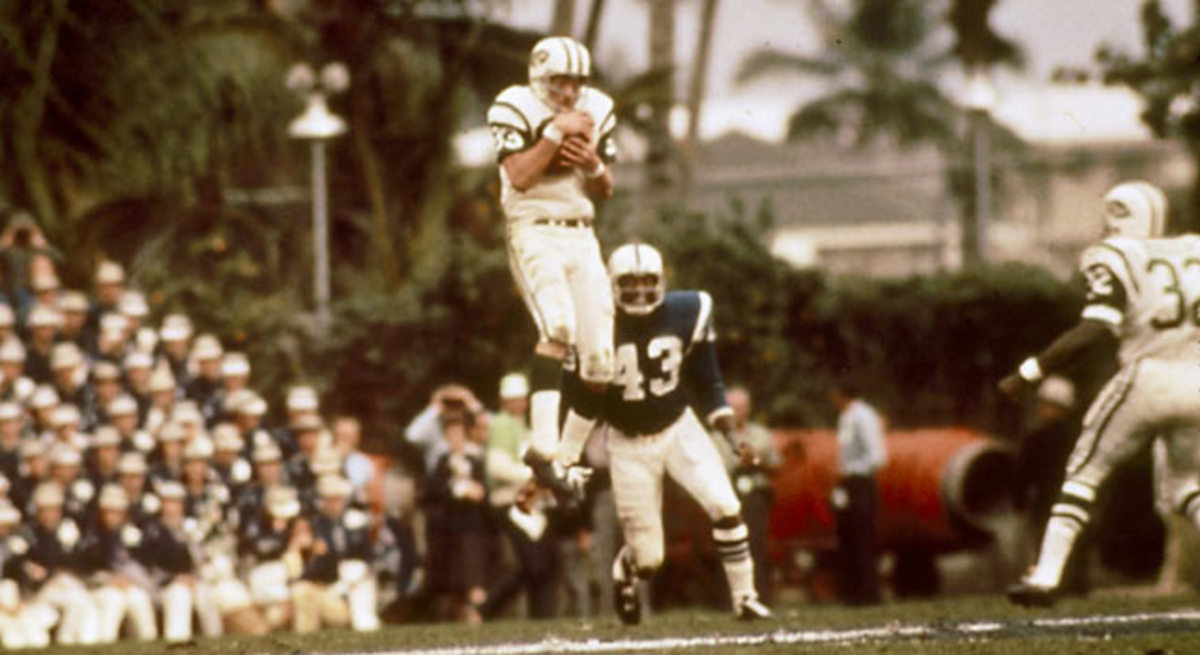
(Courtesy: NFL/Getty Images)
Namath, who would go on to be the MVP, said the victory “sent a message to all the underdogs out there. If you want something bad enough and you aren’t afraid to lay it on the line, you can do it.”
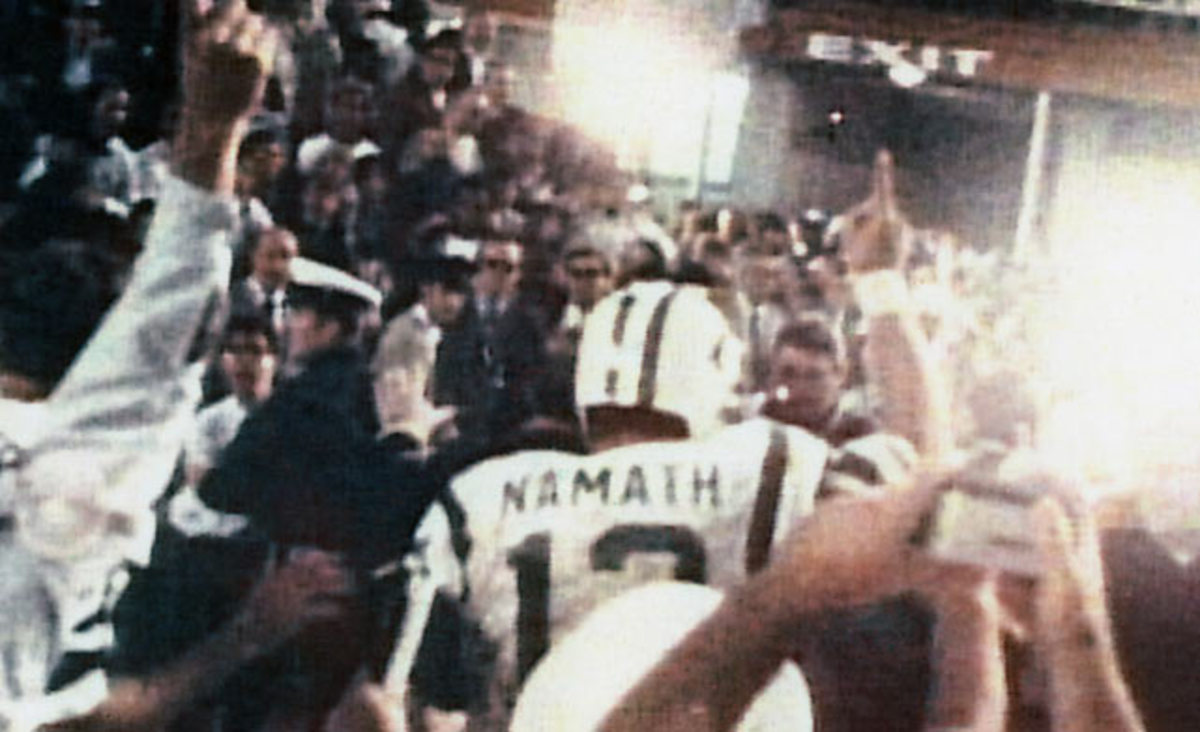
(Courtesy: NFL/Getty Images)
The effect of the game on Namath was felt immediately as he quickly became one of the first athletes to have such crossover appeal into mainstream American popular culture with his good looks and charm who attracted a Beatles-like frenzy everywhere he went.
A sex symbol if there ever was one.
“He was probably the first professional athlete who became a figure, “ said Kindred. “An iconic figure. A name who spoke to you in popular culture. Namath invaded your consciousness at all times.”
He would go on to star in movies such as C.C. and Company with Ann Margert, an iconic Pantyhose commercial with Beautymist, and oozing his sex appeal in a series of commercials with Farrah Fawcett.
Although history would look at him as a rather subpar quarterback whose later years were injury-ridden and who five months after winning the game, he briefly left rather than sell his share in owning the notorious nightclub Bachelors III, he is still regarded as a one of-a kind ever-present culture figure.
As for the game itself, not only did it lead to the merger between the AFL and NFL in 1970, but it made the Super Bowl into the unofficial national holiday that it is today. A must-see event that blends together all the elements of culture into one for all to anticipate and relish in the moment.
It also fit in well with the ethos of the 1960s where the downtrodden and forgotten had their say, particularly in 1969 when evidently the impossible became possible.
“It created an atmosphere that anything can happen at any moment,” said Kindred. “Super
Bowl III fit right into all of that.”
In an era of change, it was a change that did the game good.


 NFL
NFL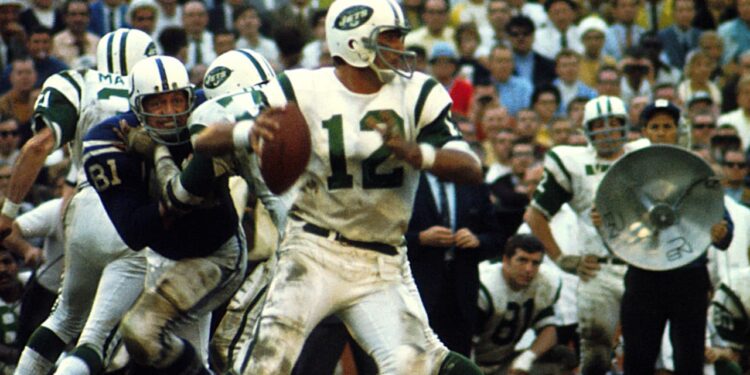






Aquarius, not Acquarius!!!